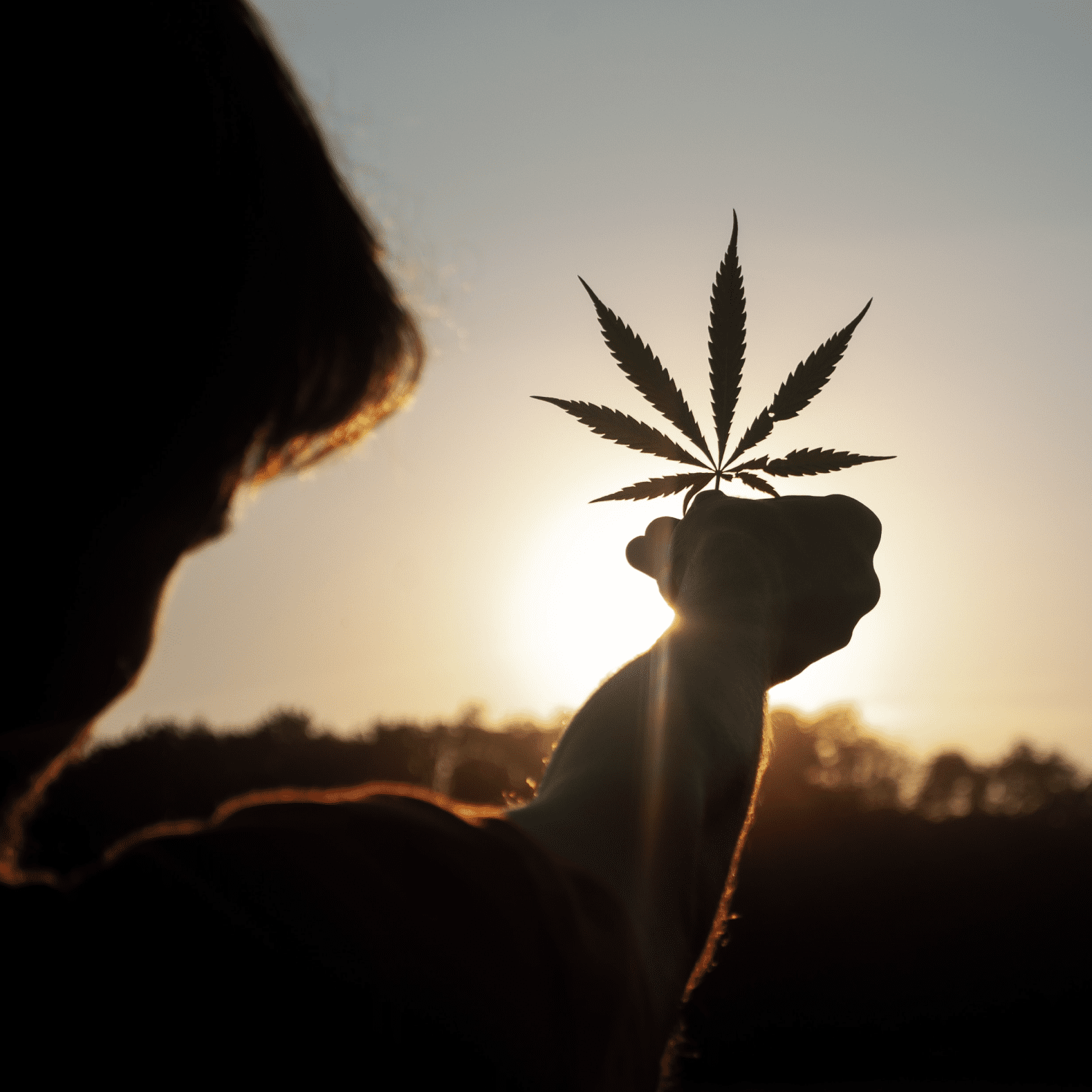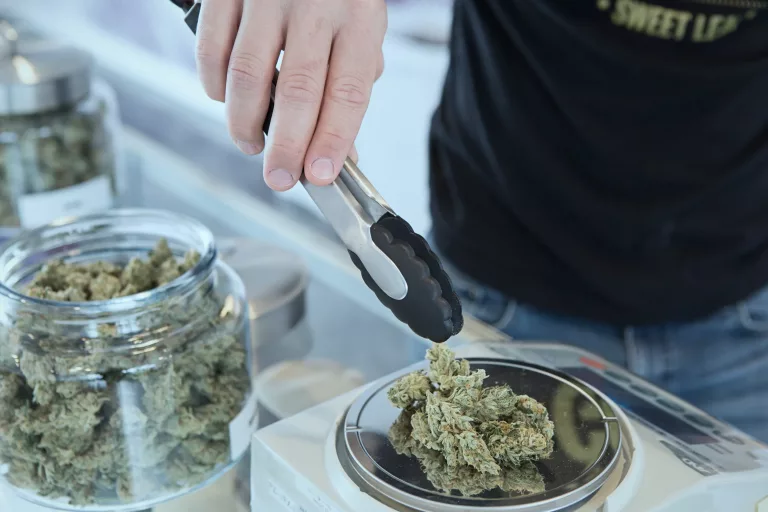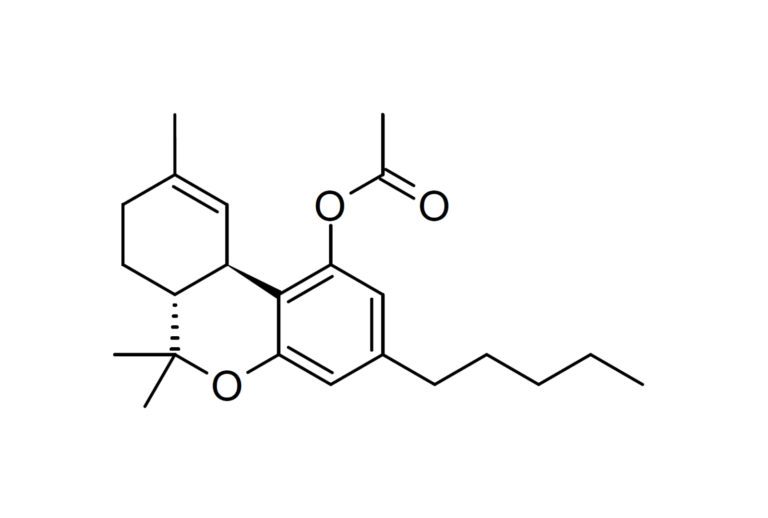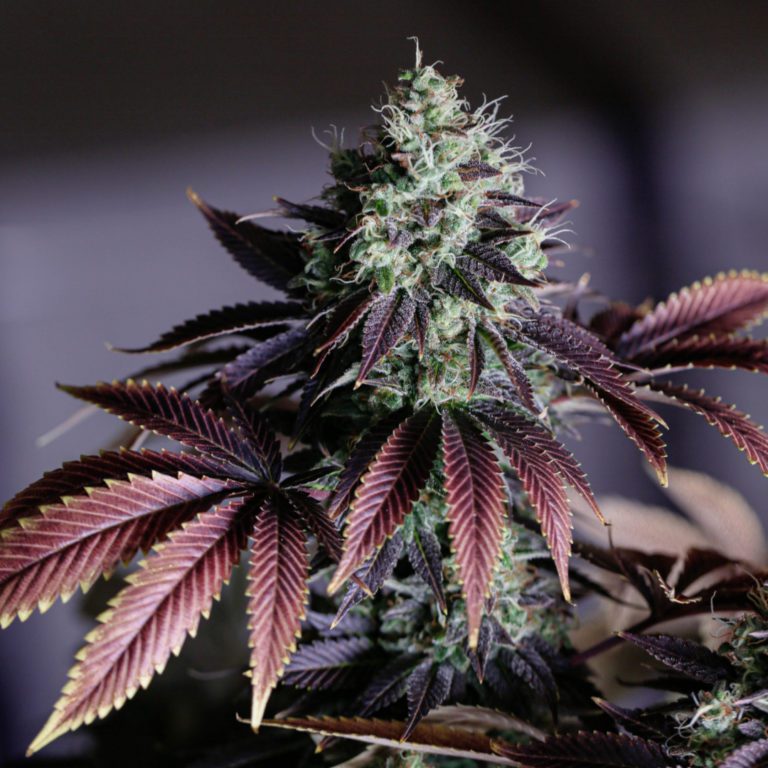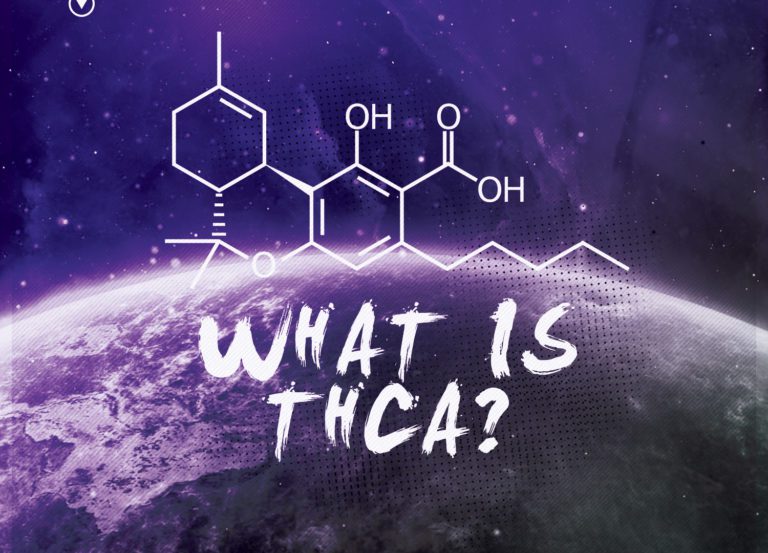The Ultimate Guide to THC
Introduction
As we navigate through the ever-evolving landscape of cannabis, it becomes crucial to understand its core components, primarily the psychoactive compound known as Tetrahydrocannabinol or THC. This introduction will provide a brief overview of THC, shed light on its historical use, and delve into the legal controversies surrounding it.
Brief Overview of THC
THC, short for Tetrahydrocannabinol, is one of the numerous cannabinoids found in the Cannabis sativa plant. However, it stands out due to its psychoactive properties that alter consciousness, mood, and perception, leading to the characteristic “high” associated with marijuana use. THC engages with the body’s endocannabinoid system, more specifically, the cannabinoid receptors in the brain, to produce its effects. Its influence reaches various bodily functions, including pain sensation, appetite, mood, and memory.
Historical Use of THC
The use of cannabis dates back thousands of years, with evidence of its use for medicinal, spiritual, and recreational purposes across various cultures. Ancient texts from China and Egypt mention the use of cannabis in their medical treatments, highlighting its therapeutic potential. During the 19th century, cannabis tinctures were common in Western medicine, used for ailments like menstrual cramps and migraines. However, the psychoactive component, THC, was not identified until the 20th century, when Raphael Mechoulam, an Israeli chemist, isolated and synthesized it in 1964.
The history of cannabis usage is as rich and varied as the cultures that have employed it. Archeological findings suggest its usage dates back to the Neolithic age (around 5000 BC), where remnants of the plant were found in ancient tombs in China and Taiwan. In these cultures, hemp (the non-psychoactive variety of the Cannabis plant) was valued for its use in textiles and possibly as a food source.
The psychoactive properties of Cannabis were recognized and incorporated into cultural practices by many ancient societies. In India, for instance, it has been used for centuries in religious ceremonies and Ayurvedic medicine for ailments ranging from insomnia to digestive issues. In the Middle East, ancient texts also describe the use of Cannabis in various forms for a range of medical conditions. The Greeks and Romans were aware of the psychoactive properties of Cannabis, but it was primarily used for pain relief and to treat inflammation.
Legal Issues and Controversies
THC’s legal status has been a subject of controversy and debate. It’s classified as a Schedule I drug under the United States federal law, putting it in the same category as heroin and LSD. However, numerous states have defied federal law by legalizing medical and even recreational marijuana.
The legal issues surrounding THC are inextricably intertwined with societal attitudes, politics, and, regrettably, racial discrimination. In the United States, the criminalization of cannabis began in the early 20th century and was heavily influenced by racial and ethnic prejudices.
During the 1930s, against the backdrop of the Great Depression, fears and resentment were directed towards Mexican immigrants, who were often associated with cannabis use. This period marked the start of an extensive disinformation campaign, sensationalizing the purported dangers of “marihuana” and linking its use to crime, violence, and anti-social behavior. The racial undertones were inescapable, as this campaign mainly targeted communities of color.
The passing of the Marijuana Tax Act of 1937 effectively criminalized cannabis at a federal level, marking the beginning of the War on Drugs. This war escalated in the 1970s under President Nixon, disproportionately affecting minorities. Despite similar rates of usage, studies have shown that Black Americans are nearly four times more likely to be arrested for marijuana possession than their white counterparts.
Recent decades have seen a gradual shift in societal attitudes towards cannabis and its legal status, but the consequences of its criminalization continue to impact marginalized communities. The emerging legal cannabis industry, including THC and CBD markets, must reckon with this legacy and work towards restorative justice in its practices.
Globally, the situation varies drastically. Some countries have strict prohibition policies, while others, such as Canada and Uruguay, have fully legalized cannabis. The shift in public opinion towards cannabis and its potential therapeutic benefits has triggered legal reforms in many jurisdictions. However, the issue remains fraught with legal, ethical, and health-related debates.
In the United States, the legal landscape surrounding THC has further complexities due to the differentiation between Delta-9 THC and its relative, Delta-8 THC. According to the 2018 Farm Bill, hemp was federally legalized and defined as the Cannabis sativa plant containing not more than 0.3% Delta-9 THC by dry weight. This regulation allowed the hemp industry to flourish across many states, including North Carolina.
Under these federal guidelines, businesses such as Hempie’s operate in North Carolina, offering a range of hemp-derived products. While these products may contain THC, they adhere to the mandated limit of Delta-9 THC being under 0.3%. However, it’s important to note that the legislation does not universally legalize all forms or uses of THC. The area remains legally murky and underscores the need for continued legislative clarification and normalization of cannabis laws.
II. The Science Behind THC
What are Cannabinoids?
Cannabinoids are a class of diverse chemical compounds that act on cannabinoid receptors in cells in the brain and body. These compounds naturally occur in the Cannabis sativa plant and are responsible for the various effects of cannabis. Over 100 cannabinoids have been identified, and each has different impacts on the body and mind.
Different Types of Cannabinoids: THC, CBD, CBN, THCP, Delta-8, Delta-9, Delta-10 etc.
The two most well-known and extensively researched cannabinoids are Delta-9-Tetrahydrocannabinol (THC) and Cannabidiol (CBD). THC is known for its psychoactive properties, producing the “high” that recreational users seek. On the other hand, CBD is non-psychoactive and is being researched for its potential therapeutic effects in managing conditions like epilepsy, chronic pain, and anxiety.
Other less well-known but still important cannabinoids include Cannabinol (CBN), Cannabigerol (CBG), and Cannabichromene (CBC). These cannabinoids are present in lower concentrations in the cannabis plant but are gaining interest for their potential medicinal properties. For example, CBN is being studied for its potential sedative effects, while CBG and CBC are being researched for their possible anti-inflammatory and antimicrobial properties.
Delta-9-Tetrahydrocannabinol (Delta-9 THC) is the primary psychoactive component in cannabis that’s known for causing the characteristic “high.” It interacts with the endocannabinoid system, particularly the CB1 receptors in the brain, producing psychoactive effects.
Cannabidiol (CBD) is the second most abundant cannabinoid, offering a range of potential therapeutic benefits without any psychoactive effects. CBD does not directly bind to the CB1 and CB2 receptors but seems to modulate several non-cannabinoid receptors and ion channels and enhance the levels of endocannabinoids by inhibiting their enzymatic breakdown.
Cannabinol (CBN), although less abundant, is gaining attention for its potential sedative effects and applications in sleep aid formulations.
Delta-8-Tetrahydrocannabinol (Delta-8 THC) is an isomer of Delta-9 THC but with subtle differences in its effects. It’s often described as offering a less intense, more clear-headed high than Delta-9 THC.
Delta-10-Tetrahydrocannabinol (Delta-10 THC) is another minor cannabinoid with a molecular structure slightly different from Delta-9 and Delta-8 THC. The effects of Delta-10 THC aren’t as well-studied, but early reports suggest it may offer a less intense, more upbeat high compared to its counterparts.
Tetrahydrocannabiphorol (THCP) is a recently discovered cannabinoid that’s structurally similar to THC but appears to be significantly more potent. However, much more research is needed to understand THCP’s effects fully.
Each cannabinoid offers unique properties, and the composition can significantly affect the overall effects of a cannabis product. Understanding these different cannabinoids is crucial for both medicinal and recreational users to choose the most appropriate strain or product for their needs.
The Endocannabinoid System
The Endocannabinoid System (ECS) is a complex cell-signaling system within the body that plays a crucial role in maintaining homeostasis, or internal stability. The ECS consists of endocannabinoids (endogenous cannabinoids produced by the body), enzymes that synthesize and degrade endocannabinoids, and cannabinoid receptors (CB1 and CB2) located in the central and peripheral nervous systems.
THC interacts with this system, binding to cannabinoid receptors, particularly CB1 receptors in the brain, to produce its psychoactive effects. On the contrary, CBD does not bind directly to CB1 or CB2 receptors but instead influences the ECS to use more of its own endocannabinoids.
The ECS plays a crucial role in regulating a wide array of physiological processes including mood, appetite, sleep, immune response, and pain. Consequently, the effects of cannabinoids on the ECS have important implications for health and disease.
How THC Interacts with the Body
THC and CB1/CB2 Receptors
THC primarily exerts its effects by binding to cannabinoid receptors present in the central and peripheral nervous system. There are two main types of cannabinoid receptors: CB1 and CB2. CB1 receptors are highly concentrated in the brain and are responsible for the psychoactive effects of THC. When THC binds to CB1 receptors, it can influence functions such as mood, appetite, pain sensation, and memory. CB2 receptors, on the other hand, are found predominantly in the immune system. THC’s interaction with CB2 receptors, although less well understood, is believed to have potential implications for inflammation and pain.
The Impact of THC on Neurotransmission
THC also has a significant impact on neurotransmission, or the process by which signaling molecules are released by a neuron to communicate with neighboring neurons. Upon entering the bloodstream, THC can cross the blood-brain barrier and interact with the endocannabinoid system, disrupting normal neurotransmission.
When THC binds to CB1 receptors, it inhibits the release of certain neurotransmitters and increases the release of others. This change in neurotransmitter balance leads to various physiological responses, like euphoria, altered sensory perception, increased appetite, and decreased pain sensation. However, the magnitude and duration of these effects can vary significantly based on the dosage and individual’s tolerance.
The Difference between THC and CBD
THC and CBD are the two most abundant cannabinoids found in cannabis plants, but they have very different effects on the human body.
THC, or Delta-9-Tetrahydrocannabinol, is psychoactive and known for causing a high. It has strong binding affinity for CB1 receptors, located predominantly in the brain, leading to its psychoactive effects. THC is used both recreationally and medicinally for its euphoric effects and ability to alleviate symptoms like pain and nausea.
In contrast, CBD, or Cannabidiol, does not produce a high and is non-intoxicating. CBD does not have a strong affinity for CB1 or CB2 receptors. Instead, it appears to work by inhibiting the reuptake of the body’s endocannabinoids and modulating several non-cannabinoid receptors and ion channels. CBD has been studied for its potential therapeutic effects in a variety of health conditions, including epilepsy, anxiety, and chronic pain.
Therefore, while both THC and CBD are derived from the same plant and interact with the endocannabinoid system, they do so in different ways, resulting in different effects.
III. Ingestion and Administration of THC
Smoking or Vaporizing
One of the most common and traditional methods of consuming THC is through smoking or vaporizing. In smoking, dried cannabis flower is typically rolled into a joint or packed into a pipe or a water bong and then lit to produce smoke that’s inhaled. This method allows the THC to enter the bloodstream quickly via the lungs, providing almost immediate effects.
Vaporizing, also known as vaping, involves heating the cannabis flower or concentrates to a temperature that turns the active compounds (including THC) into vapor. This vapor is then inhaled. Vaporizing is considered a less harsh method as it does not involve combustion, reducing the number of harmful byproducts inhaled.
Pros and Cons
Pros: Both smoking and vaping have a quick onset of effects, usually within minutes. This immediate feedback allows the user to easily control their dose. Also, these methods may offer more potent effects compared to other forms of administration, which is often preferred by recreational users or those seeking immediate relief from symptoms.
Cons: On the downside, smoking involves combustion, which can produce harmful byproducts and can be harsh on the lungs and throat. Habitual smoking may lead to respiratory issues over time. While vaping reduces some of these risks. Additionally, the effects from smoking and vaping are typically shorter-lived compared to other methods of consumption.
Edibles and Tinctures
Edibles are food products infused with THC. These can take the form of baked goods, candies, chocolates, beverages, and more. Due to their innocuous appearance and palatable nature, they provide a very discreet way to consume THC. Edibles are metabolized by the liver, which converts THC to 11-hydroxy-THC, a potent form of the compound that results in a different type of high that is often more intense and longer-lasting.
Tinctures are liquid extracts of cannabis that are applied under the tongue using a dropper. They are absorbed through the mucous membranes in the mouth and have a faster onset than edibles, allowing for more control over dosing.
Pros and Cons
Pros: Both edibles and tinctures provide an alternative to inhaling cannabis, which can be preferred by those who cannot or do not wish to smoke. The effects of edibles are more prolonged and can be more intense due to the conversion of THC into 11-hydroxy-THC in the liver.
Cons: Overconsumption of edibles is a common concern due to their delayed onset of effects, which typically occurs 30 minutes to 2 hours after consumption. The lag between consumption and feeling the effects can lead people to consume more than intended, resulting in an uncomfortable high. This is the number one reason people are often apprehensive about trying edibles again after a negative experience.
To avoid overconsumption, it’s crucial to start with a low dose and wait for the full effects to manifest before deciding to consume more. Keep in mind that the effects can be stronger and last longer than other consumption methods, so patience is key.
Recently, there has been a development in nanoemulsion technology, a process that breaks down the cannabis extract into nanoparticles. This allows for more efficient absorption of THC in the body, leading to a faster onset of effects—typically within 15 to 20 minutes. Nanoemulsions can improve the edibles experience by reducing the waiting time and potentially providing a more predictable onset, though individual responses can still vary.
Despite these advancements, it’s always important to approach edibles with caution, especially if you’re a novice user or sensitive to the effects of THC. As with all forms of cannabis, the mantra “start low and go slow” applies.
Topicals and Transdermal Patches
Topicals refer to cannabis-infused products, like creams, balms, or lotions, that are applied directly to the skin. They are often used for localized relief of pain, inflammation, or certain skin conditions.
Transdermal patches are adhesive patches infused with cannabinoids that are applied to the skin. They deliver a steady, slow release of THC (or other cannabinoids) into the body over a period of time.
Pros and Cons
Pros: Both topicals and transdermal patches provide localized relief and are an excellent option for those who want to avoid the psychoactive effects of THC. Topicals are non-intoxicating, and transdermal patches can be formulated to minimize psychoactive effects. They offer a long duration of effect, particularly transdermal patches, which can provide sustained release over several hours.
Cons: Topicals generally do not provide the “high” associated with other forms of consumption, which might be a disadvantage for those seeking these effects. Transdermal patches may not provide immediate relief, and the effectiveness can vary based on factors like the location of application and the individual’s body temperature. Moreover, both of these methods may not be suitable for those looking for systemic effects as opposed to localized relief.
Topicals and Transdermal Patches
Topicals refer to cannabis-infused products that are applied directly to the skin for localized relief. These products come in various forms, including creams, lotions, balms, and salves, and are commonly used to alleviate symptoms such as pain, inflammation, and skin disorders.
Transdermal patches are adhesive patches infused with THC that adhere to the skin and deliver the active compound into the body over an extended period. The cannabinoids in the patches enter the bloodstream through the skin, providing long-lasting relief.
Pros and Cons
Pros: Topicals provide localized relief, making them excellent for targeting specific areas of the body. They are also non-psychoactive, meaning they won’t cause a “high.” Transdermal patches provide a slow and steady release of THC, offering consistent dosing and prolonged relief, often up to several hours.
Cons: Topicals only affect the area where they’re applied and don’t provide the systemic effects that other methods do, so they may not be suitable for conditions that benefit from full-body effects. While transdermal patches do deliver THC into the bloodstream, the onset of their effects can be slower compared to other methods, and their effectiveness can depend on various factors, such as the location of application and the individual’s body temperature.
THC Isolates and Distillates
1. Method Description
THC isolates and distillates are highly concentrated forms of THC. Isolates are purified forms of the compound, usually appearing as a crystalline white powder that’s over 99% pure THC. Distillates, on the other hand, are a form of cannabis extract that has been refined to separate the cannabinoids and terpenes from the plant matter and other impurities, resulting in a potent, clear, and odorless oil that’s rich in THC.
Pros and Cons
Pros: Isolates and distillates provide a very potent and consistent dose of THC, which can be beneficial for those who need high doses for medical purposes. They also offer versatility in use—they can be used to make edibles, topicals, vape oils, or can be dabbed.
Cons: The high potency of these products means that they should be used with caution, especially by those new to cannabis. Furthermore, because they’ve been stripped of other compounds, they don’t provide the “entourage effect” that’s believed to enhance the therapeutic benefits of cannabis. This effect refers to the synergistic interaction between cannabinoids, terpenes, and other compounds naturally found in cannabis, and is absent in products like isolates and distillates that contain only pure THC.
IV. The Effects of THC
Immediate and Short-Term Effects
The immediate and short-term effects of THC can be both physical and mental. Physically, THC can lead to red eyes, dry mouth, and an increase in heart rate. The mental effects include an altered sense of time, euphoria or feelings of relaxation, heightened sensory perception (colors may seem brighter, sounds more distinct), and increased appetite, often referred to as “the munchies.”
It’s also important to note that THC can have varying effects depending on the dosage and the individual’s tolerance. In low to moderate doses, THC can induce feelings of relaxation and euphoria. However, higher doses may lead to adverse effects such as anxiety, paranoia, and disorientation.
Long-Term Effects
Long-term effects of THC are still being studied, but evidence suggests that prolonged use can lead to a decrease in cognitive function, particularly in those who began using in adolescence. Other potential long-term effects can include changes in mood, impaired memory, and potential dependency or addiction in some individuals.
Factors Influencing the Effects of THC
Several factors can influence how an individual reacts to THC.
1. Dosage
The dosage, or the amount of THC consumed, plays a significant role in determining the effects. Small doses of THC can result in mild euphoria and relaxation, while larger doses might lead to more intense psychoactive effects, such as paranoia or anxiety.
2. Individual Metabolism
Each person metabolizes THC differently. Factors such as body mass index (BMI), sex, age, and overall health can affect how quickly or slowly the body metabolizes THC. Additionally, regular users may develop a tolerance to THC, meaning they need larger doses to achieve the same effects as before.
3. Strain Type
The type of cannabis strain used can also impact the effects of THC. Cannabis strains are typically classified as Indica, Sativa, or Hybrid. While both Indica and Sativa strains can have high THC content, they are believed to have distinct effects. Indica strains are typically associated with a body high and relaxation, while Sativa strains are associated with a cerebral high and increased energy. Hybrid strains fall somewhere in between, depending on the specific combination of Indica and Sativa in the hybrid. However, these classifications are often oversimplified, and the effects can vary widely depending on the specific cannabinoid and terpene profiles of the individual strain.
V. Medical Benefits of THC
While the FDA has not approved the cannabis plant for any medical use (from when this article was written), it is worth mentioning the areas in which THC has shown potential benefits according to ongoing research and patient reports. Always consult a healthcare provider for any health concerns and remember that results may vary from person to person.
A. Pain Management
Studies suggest that THC might play a role in pain management. Some individuals report using cannabis to help alleviate chronic pain, though experiences vary widely and more research is needed.
B. Glaucoma Treatment
While research is not conclusive, some early studies suggested that cannabis could reduce intraocular pressure in glaucoma patients. However, this potential benefit should be approached with caution as the effect is short-lived, and there are other FDA-approved treatments available that are safer and more effective.
C. Appetite Stimulation and Nausea Reduction
Cannabis has a longstanding reputation for increasing appetite and reducing nausea. Some individuals undergoing treatments like chemotherapy, which can cause severe nausea and loss of appetite, have reported symptom relief from cannabis use.
D. PTSD and Anxiety Management
Some individuals with PTSD or anxiety disorders report that cannabis helps manage their symptoms. However, it’s important to note that others may experience heightened anxiety or paranoia with cannabis use. Mental health effects can be complex and are often influenced by factors such as dose, individual sensitivity, and the specific cannabinoid and terpene profile of the cannabis used.
E. Emerging Research and Potential Benefits
There’s a wealth of ongoing research exploring the potential benefits of THC for a variety of conditions. Some early studies suggest that THC might have potential in areas like neuroprotection, anti-inflammation, and sleep aid, among others. However, these areas require more research, and there’s currently not enough evidence to conclusively support these potential uses. Always consult with a healthcare provider before using cannabis or any substance to treat a health condition.
VI. Terpenes
What are Terpenes?
Terpenes are organic compounds that give plants, including cannabis, their unique aroma and flavor. They are believed to work synergistically with cannabinoids to enhance or modify the effects of cannabis, a concept known as the “entourage effect”.
Primary Terpenes and Descriptions
Some of the primary terpenes found in cannabis include:
Myrcene: Often associated with earthy, musky notes, myrcene is believed to promote relaxation and sedation.
Limonene: This terpene has a citrusy aroma and is thought to have mood-enhancing effects.
Caryophyllene: Characterized by a spicy, peppery aroma, caryophyllene is unique in that it can also interact with the endocannabinoid system.
Pinene: As the name suggests, pinene has a pine-like aroma. It is thought to promote alertness and counteract some THC effects.
Linalool: Known for its floral scent, linalool is often associated with calming effects.
Please note that the effects associated with specific terpenes are not yet fully understood, and more research is needed to confirm these findings.
VII. Activation Temperature and Boiling Point
Activation temperature refers to the temperature at which the cannabinoids and terpenes in cannabis become activated or “decarboxylated”. This process is essential to make these compounds bioavailable for absorption in the body.
The boiling point, on the other hand, refers to the temperature at which these compounds start to evaporate. Each cannabinoid and terpene has a different boiling point, and understanding these can help optimize your cannabis consumption experience
THC (Tetrahydrocannabinol): THC is the most well-known cannabinoid due to its psychoactive properties. The activation temperature for THC is around 220°F (104°C), and its boiling point ranges from 315°F to 392°F (157°C to 200°C).
CBD (Cannabidiol): CBD is a non-intoxicating cannabinoid known for its potential therapeutic properties. Its activation temperature is around 220°F (104°C), and its boiling point is between 320°F and 356°F (160°C to 180°C).
CBN (Cannabinol): CBN is another non-intoxicating cannabinoid that is mostly found in aged cannabis. The activation temperature for CBN is around 220°F (104°C), and its boiling point is between 365°F and 375°F (185°C to 191°C).
CBG (Cannabigerol): CBG is a non-psychoactive cannabinoid that serves as a precursor to other cannabinoids. The activation temperature for CBG is around 220°F (104°C), and its boiling point is about 126°F (52°C).
THCV (Tetrahydrocannabivarin): THCV is a minor cannabinoid that may have psychoactive properties at high doses. The activation temperature for THCV is around 220°F (104°C), and its boiling point is about 428°F (220°C).
Remember that these temperatures are approximations and can vary based on factors like the specific strain of cannabis and the method of consumption. Always use careful judgement when applying heat to cannabis, and avoid combustion to reduce potential harms.
VIII. Anatomy of Cannabis
The cannabis plant consists of several key parts:
Stalk: The stalk of the cannabis plant is used primarily for industrial purposes, such as creating hemp fiber for clothing, construction materials, and more.
Seeds: Cannabis seeds can be used to cultivate new cannabis plants. They can also be processed for nutritional purposes, as they’re rich in proteins and fatty acids.
Leaves: The iconic cannabis leaves, particularly the sugar leaves, can contain a layer of cannabinoid-rich trichomes. However, they are typically less potent than the flowers.
Flowers or Buds: The flowers (or buds) of the cannabis plant are the most potent part of the plant, containing the highest concentration of cannabinoids and terpenes.
Trichomes: These tiny, crystal-like structures on the surface of the cannabis flower produce and contain the plant’s cannabinoids and terpenes. They serve as a defense mechanism in nature, but for consumers, they are often associated with potency and quality.
Cola: A cola refers to a cluster of buds on the cannabis plant. The main cola (or apical bud) appears at the top of the plant, with smaller colas on the branching sites below.
Stigmas and Pistils: These are the parts of the female cannabis plant that receive pollen from males. They appear as small hair-like extensions on the buds and can vary in color. Although they play a crucial role in the plant’s reproduction, they do not have a significant concentration of cannabinoids or terpenes.
Conclusion
The Ongoing Debate about THC
The discussions surrounding THC and its impact on society, law, and individual health continue to evolve. As laws change and societal attitudes shift, new perspectives and information continue to emerge.
The complexity of THC and other cannabinoids, their effects, and their therapeutic potential underscores the crucial need for continued research. As more countries and states revise their cannabis laws, the scientific community has more opportunities than ever to conduct in-depth studies. Continued research will help us better understand the potential benefits of THC, leading to better guidelines for its use and potentially revealing new therapeutic applications for this multifaceted compound. One thing we know for sure, it helps a lot of people and big pharma is terrified.
Interested in trying THC? Shop on our website! We ship!
